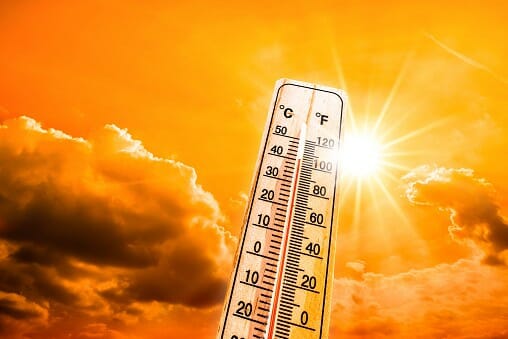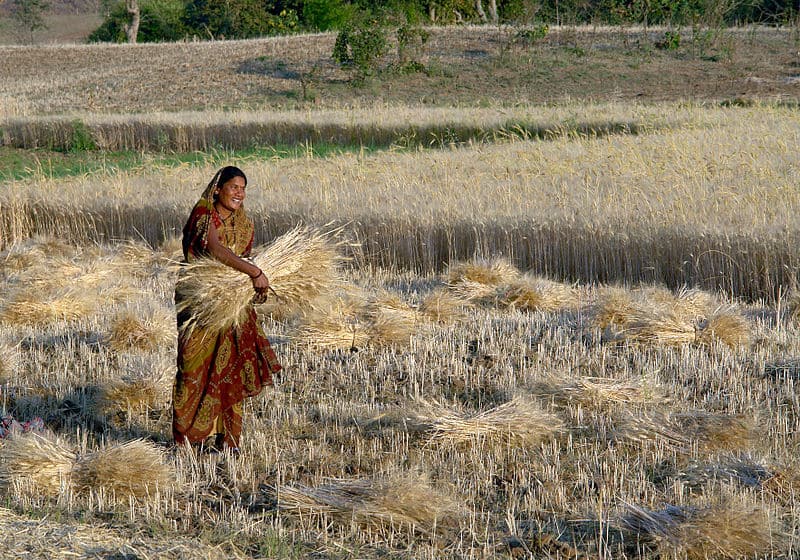On a hot May afternoon, Devika Singh, a Delhi-based marketing professional left her office to meet a client. Suddenly, after 20 minutes, she felt uneasy while walking to her car in a nearby parking lot. She fainted before she could grab a bottle of water. She regained consciousness after someone sprinkled water on her face and head. She was offered a glass of sugarcane juice by a juice shop owner. Finally, she called a colleague, who picked her up and took her to the nearby hospital, where the doctor told her that she became unconscious because of the scorching heat.
The national capital simmered at 44 degrees centigrade that day.
“Heat can kill,” says Dr Dileep Mavalankar, director, Indian Institute of Public Health, Gandhinagar. “It can affect the blood circulation and internal organs. If the head is bare, it might affect the brain too”.
How heat affects the brain and mental health
Doctors say that exposure to extreme heat exacerbates underlying medical conditions such as coronary artery disease, respiratory illness, kidney issues. But what is less known is that “extreme heat can change the body’s neurochemistry, leading to frustration, depression, irritability,” as pointed out by Dr Deepak Raheja, a noted psychiatrist and director, Hope Care India. “These micro bouts of irritability can lead to extreme rage, even crime”.
“Uncomfortable heat can reduce a person’s cognitive abilities,” explains Dr Pratima Murthy, Director, NIMHANS, Bangalore. “At very high temperatures, the blood- brain barrier can break, leading to unwanted proteins and ions building up in the brain, causing inflammation and disturbing normal function. There can also be cell death. Dehydration can affect brain function. There is growing evidence that adverse climate is linked to mental disorders such as mania and depression, suicide as well as post-traumatic stress disorder.”
While some illnesses may be the direct effect of heat, leading to disturbed sleep, memory loss, reduced concentration, heat can also indirectly lead to mental health problems. Experts says hot weather can lead to reduced resilience, which in turn can lead to irritation, anxiety, interpersonal problems, domestic violence, substance use as well as workplace injury.
Studies in India done at the All India Institute of Mental Health (now NIMHANS) Bangalore suggested that hot climate may be responsible for adverse treatment outcomes among persons with severe mental illness. There are a few studies which have looked at the psychological impact of heat. Increasingly, climate change is a serious mental health concern especially among workers in agriculture-based economies. In India, NIMHANS is the nodal centre to address mental health impact of climate change.
Deaths known and unknown
In summers, as mercury soars, people need to be cautious and protect themselves from prolonged exposure to the Sun, warns Dileep Mavalankar, citing a 2010 heat wave in Ahmedabad, which claimed 360 lives in a day and 800 in a week. In April this year, at least 11 people died from dehydration and heatstroke, and about 50 were hospitalised after they attended the government’s Maharashtra Bhushan award ceremony in an open ground at Navi Mumbai on a blazing Sunday.
Direct continuous exposure to sunlight can lead to severe dehydration, which may cause organs to malfunction. To deal with excessive heat, the body perspires in order to maintain a normal body temperature. It increases blood circulation, with the heart having to pump blood much faster than normal. When the heart fails to beat as fast as it is supposed to, it can lead to heat stroke.
The elderly, people with comorbidities, people with a weak heart, and small children are more prone to heatstroke than others. In newborns in particular, the thermo regulatory mechanism is not developed.
“Infants are highly sensitive to heat,” says Dr Khyati Kakkad, professor and head of the department, pediatrics, LG Hospital, Ahmedabad. “Even a small exposure can dehydrate them, which could be fatal. We get a lot of young school children with dehydration, high fever, diarrhoea — all symptoms of heat-related illness. This is common among children as they keep playing outdoors in the heat, drink less water during school hours, and often miss their meals.”
Read more: Heat wave information: What to look out for and where?
Doctors advise against sending children to play outdoors during extreme summers. “We advise schools to replace outdoor activities with indoor activities and have frequent water breaks that can encourage children to drink water,” says Dr Khyati. “We also ask schools to keep toilets clean; many children avoid drinking water because they don’t want to use dirty toilets at school”.
“Activity increases the chances of exertional heat stroke, or direct heat stroke,” says Dr Dileep. “These are common in younger people. In older people, on the other hand, we witness more cases of indirect or non-exertional heat stroke which may occur when the core body temperature increases upon being exposed to high temperature for prolonged periods”.

Experts say that temperature above 45-degree Centigrade or five degrees above the normal temperature of the region can be termed as a heat wave.
Extreme summers: How should one take care?
People must be aware of the impact of heat. “They should use a head covering; stay adequately hydrated; learn how to reduce stress, avoid substance use, get support and help reduce stress and improve resilience,” says Dr Murthy. “People with mental health issues should take extra care. Persons on psychotropic medication may have an impaired ability to regulate the body temperature. They are at a risk of developing raised body temperatures during hot weather, which can even be fatal.”
Those with associated health problems such as heat or pulmonary disease, diabetes and substance abuse should avoid overexertion, especially during hot parts of the day; drink plenty of fluids, wear loose clothing, eat regular meals to ensure adequate salt, and have enough fluids.
The symptoms of heat exhaustion include irritation, changes in pulse and blood pressure, rapid breathing, perspiration, dizziness, headache, weakness, nausea and vomiting, cramps and low body temperature. Similarly, common heat stroke symptoms are agitation, confusion, lethargy, high body temperature, changes in pulse, blood pressure and breathing, hot, dry flushed skin and impaired consciousness. Such symptoms need to be recognised and appropriately treated.
A person who suffers heat stroke, or becomes unconscious, can be helped if he is moved to shade. Sprinkling water to cool down the body also helps. One can also place ice packs in arm pits and groin area, where large blood vessels are present, to quickly bring down the body temperature.
“Icepacks though very effective for adults, however are not advisable for children,” says Dr Kakkad. “For children, water and wet clothes are preferred. We also advise mothers to use age-old methods of placing their wet dupattas over the baby’s cradle or a net umbrella to keep the room cool”.
Climate crisis
“In India, temperature fluctuations are increasing. Heat waves are becoming shorter but severe and frequent,” says Navdeep Dahiya, independent weatherman who runs the Live Weather of India account on Facebook and Twitter.
“Heatwave starts from Kerala in February, and moves towards Tamil Nadu and then Karnataka and Konkan region by March, says Dahiya. “The peninsular region and eastern-southern states including Madhya Pradesh, Bihar, Gujarat, Odisha face a severe heat wave in April. May and June are the hottest months in Delhi, Punjab, Haryana, Uttar Pradesh, and Rajasthan”.
A study published in The Lancet in 2022 says that with changing weather patterns and rising extremities every season, India has seen a 55% increase in deaths due to extreme heat between 2000-2004 and 2017-2021. The study also noted that excessive heat also led to a loss of 167.2 billion potential labour hours among Indians in 2021, leading to a loss of income equal to 5.4% of the country’s GDP.

“In many countries, additional deaths occurred during reported heat wave in a region are counted as deaths due to heatwave,” says Mavalankar. “Unfortunately, not many cities in India keep a record of such additional deaths”.
According to a recent study by the University of Cambridge (published in Plos climate on April 20, 2023), “An analytical evaluation of heat index (HI) with CVI [Climate Vulnerability Index] shows that more than 90% of the country [India] is at extremely cautious or dangerous levels of adversely impacting adaptive livelihood capacity, food grains yield, vector-borne disease spread and urban sustainability.”
Heat waves are the ‘silent killers’ among all the natural disasters of hydro-meteorological origin. Governments and communities need to work in tandem to respond to the risk posed by changing climatic conditions. There is also need a need to spread awareness about heat-related illness among the community.